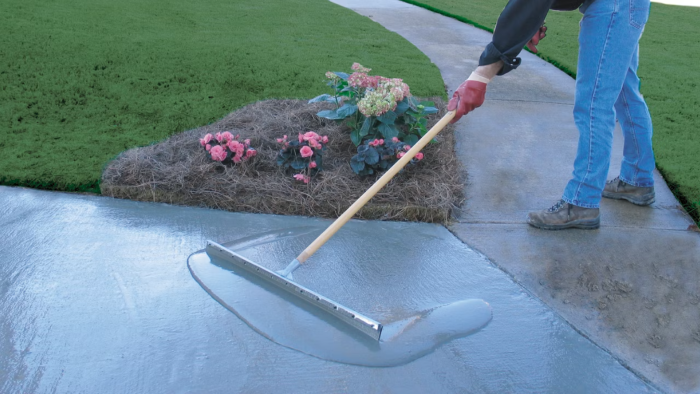The foundation of any property is the backbone of its structural integrity. Over time, concrete slabs that support our homes, driveways, and other structures can succumb to wear and tear, showing signs of aging and deterioration. Cracks, uneven surfaces, and sinking slabs are common issues that can arise, causing potential safety hazards and reducing the overall appeal and value of the property. When faced with these challenges, many property owners might assume that costly and disruptive slab replacement is the only solution. However, there is an alternative approach that can save time, money, and hassle while breathing new life into aging concrete: concrete rejuvenation.
Understanding Concrete Rejuvenation
Concrete rejuvenation is a process designed to extend the life of concrete slabs, restoring their appearance and functionality. It involves specialized techniques and materials that address the underlying issues affecting the concrete, rather than simply covering up the surface imperfections. The goal is to strengthen and stabilize the concrete, providing a long-lasting solution that enhances the structural integrity and aesthetics of the property.
Benefits of Rejuvenating Concrete
Concrete rejuvenation offers numerous benefits that make it a preferred choice for addressing concrete issues:
- Cost-Effective: Concrete rejuvenation is typically more affordable than full slab replacement. By targeting the specific areas of concern, property owners can save significantly on labor and materials costs.
- Time-Efficient: Compared to the time-consuming process of breaking and removing old concrete slabs, rejuvenation is relatively quick. In most cases, the rejuvenation process can be completed in a matter of days, minimizing disruptions to daily routines.
- Environmentally-Friendly: Reducing the need for concrete disposal and minimizing the use of new materials makes concrete rejuvenation an eco-friendly choice. It aligns with sustainable practices, making it a responsible option for property owners.
- Enhanced Aesthetics: Concrete rejuvenation not only fixes structural issues but also improves the appearance of concrete surfaces. The process can give your property a fresh, revitalized look, boosting its curb appeal.
- Increased Durability: Rejuvenating concrete strengthens its composition, making it more resistant to future wear and tear. This added durability ensures a longer lifespan for the concrete slab.
Signs of Concrete Damage
Before considering concrete rejuvenation, it’s crucial to identify signs of concrete damage. Some common indicators include:
- Cracks: Visible cracks, whether small or wide, indicate structural instability and should not be ignored.
- Uneven Surfaces: If you notice sloping or uneven surfaces, it may be a sign of sinking or settling concrete slabs.
- Spalling: Spalling refers to the chipping or flaking of the concrete surface, which can occur due to freeze-thaw cycles or exposure to harsh elements.
- Sunken Slabs: Sunken or settled slabs can create tripping hazards and may indicate soil erosion or poor compaction.
- Water Pooling: Puddles of water forming on the concrete surface may indicate drainage issues, which can lead to further deterioration.
The Process of Concrete Rejuvenation
Concrete rejuvenation typically involves the following steps:
- Assessment: A qualified concrete rejuvenation specialist will inspect the concrete slabs to determine the extent of damage and identify the root causes. Based on the assessment, they will recommend the appropriate course of action, which may include slab jacking to correct sinking or uneven concrete.
- Preparation: Before rejuvenation begins, the area surrounding the concrete slabs will be cleared and cleaned. This ensures that the rejuvenating materials can adhere properly to the surface.
- Application: Rejuvenation materials, such as polymer resins or cementitious grouts, are applied to the affected areas. These materials penetrate the cracks and voids, filling them and reinforcing the concrete.
- Curing: After the application, the rejuvenating materials need time to cure and bond with the existing concrete. This process strengthens the slab and enhances its overall stability.
- Finishing Touches: Once the rejuvenation process is complete, any excess material is trimmed, and the surface is smoothed and polished to restore its original appearance.
Choosing the Right Professionals
Selecting the right concrete rejuvenation professionals is crucial for a successful outcome. Consider the following factors when choosing a contractor:
- Experience and Expertise: Look for contractors with extensive experience in concrete rejuvenation. They should have a track record of delivering high-quality results.
- Licensing and Certifications: Ensure that the contractor holds the necessary licenses and certifications to perform the rejuvenation work. This demonstrates their commitment to industry standards and professionalism.
- Client Reviews and References: Read client reviews and ask for references from past projects. Feedback from satisfied customers can provide insights into the contractor’s reliability and workmanship.
- Warranty and Guarantees: Inquire about warranties or guarantees provided by the contractor. A reputable professional will stand behind their work and offer assurances on the longevity of the rejuvenation.
Conclusion
Concrete rejuvenation offers a cost-effective, time-efficient, and sustainable solution for revitalizing aging concrete slabs. By addressing structural issues, improving aesthetics, and increasing durability, rejuvenated concrete can bring new life to your property’s foundation. Consider consulting with experienced professionals to assess your concrete’s condition and explore the possibilities of rejuvenation.


